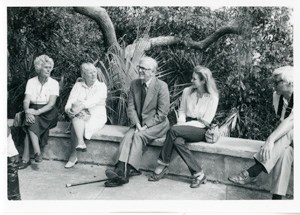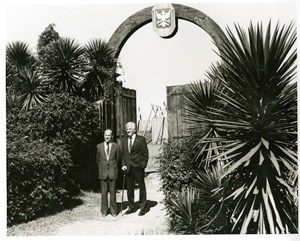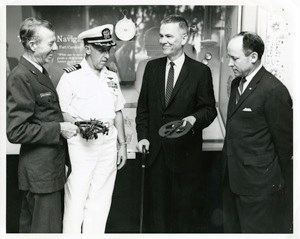
NPS Photo In the 1980s, as the country's environmental awareness and interests increased and the National Park Service implemented a uniform policy of total ecological preservation, Congressman Bennett capitalized on the opportunity to preserve invaluable wetlands in Jacksonville. Charlie had an inseparable love of history and nature. He developed a deep respect and appreciation for the two from a very young age. Bennett dedicated himself to this cause completely which is why he felt so deeply about national parks and environmental objectives. He described them as,

NPS Photo
By the 1970s, Charlie Bennett envisioned a large national park in Northeast Florida that encompassed the National Park Service's two goals of ecological and historic preservation. Bennett's first initiative to establish such a park in Northeast Florida was the Florida Frontier Historic Riverway, which did not endure beyond the master plan and environmental impact statement. He ultimately aimed to protect the sensitive and vulnerable marshes and wetlands of Nassau and Duval counties, but his vision of a park extended into the interior to incorporate the existing Fort Caroline National Memorial and several other historic sites including the site of the Spanish mission, San Juan del Puerto;the site of the American Revolutionary War battle of Thomas Creek;the Zephaniah Kingsley plantation;and the Spanish American War fortification on St. John's Bluff. Adding to the star-studded historical significance of the area, a rich Timucua Native American history associated with the area that severed as a relevant tie to the story of the French and Fort Caroline. As with Fort Caroline National Memorial, establishing a national preserve in Northeast Florida proved to be no small feat.

NPS Photo In the next Congressional term on April 8, 1987, Congressman Bennett proposed the Timucuan Ecological and Historic Preserve. The proposed preserve area in this bill only encompassed lands in Duval County and left out all controversial territory in Nassau County. The Timucuan Ecological and Historical Preserve received Congressional approval and President Reagan signed it into law on February 16, 1988.
The Timucuan Ecological and Historic Preserve is unique in its dual preservation aims and remains the only one of its kind within the National Park System, highlighting both objectives of the National Park Service. Congressman Bennett fought hard to preserve these lands for the enjoyment of future generations, and residents and tourists of Northeast Florida should strive to protect them as well. Former Senator, Bob Graham (D-Fla.), remarked, "Among his outstanding accomplishments, the many, many acres of natural beauty in Northeast Florida which he helped preserve will be a living testimony to Charlie Bennett for generations to come." (Florida Times-Union, Sept. 7, 2003) Charlie Bennett described his hopes for the future as, "If the Timuquan Preserve ever becomes everything I dreamed of it being, it will protect a lot of these marginal types of marshes, rivers, and islands from exploitation by development. People, your children, grandchildren, and mine, will be able to see the world like it was, by the preservation of these areas." (University of Florida Samuel Proctor Oral History Program).
|
Last updated: April 14, 2015
